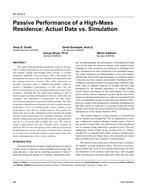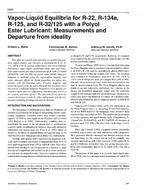Fused deposition modeling (FDM) printers, the more common type of desktop 3D printers, emit volatile gases and particulates that maydeteriorate indoor air quality. The developed method for characterizing and quantifying emissions from an operating 3D printer measures fine particulateand volatile organic compound (VOC) concentrations over time using an environment controlled testing chamber.
All tested printers emitted ultra fine particulates (UFP). Approximately 70% of the particulates released from the printers were less than 50 nm indiameter. Emitted UFPs increased in size over time by coagulating with other particles and condensation of printer-generated vapors. Chemicalcompositions of the released gases varied depending on the filament material. Volatile chemicals such as styrene and ethylbenzene were released fromacrylonitrile butadiene styrene (ABS) filament. Caprolactam, originating from a nylon filament, was a predominant released gas. Though polylactic acid(PLA) filament is thought to be safer since it is biodegradable, PLA still released chemicals such as methyl methacrylate. Acetaldehyde and formaldehydewere released from all the studied filaments. ABS emitted more particles than PLA or nylon filaments.
The extrusion nozzle temperature on the printer had the greatest effect on both particles and VOC emissions; the emissions increased as thetemperature of the nozzle increased. Depending on the maker of the filaments, the total particle number emissions varied by a factor of 20. Filamentcolors had minor effects on emissions compared to other parameters studied.
Citation: 2016 Annual Conference, St. Louis, MO, Conference Papers
Product Details
- Published:
- 2016
- Number of Pages:
- 8
- Units of Measure:
- Dual
- File Size:
- 1 file , 2.3 MB
- Product Code(s):
- D-ST-16-C054


